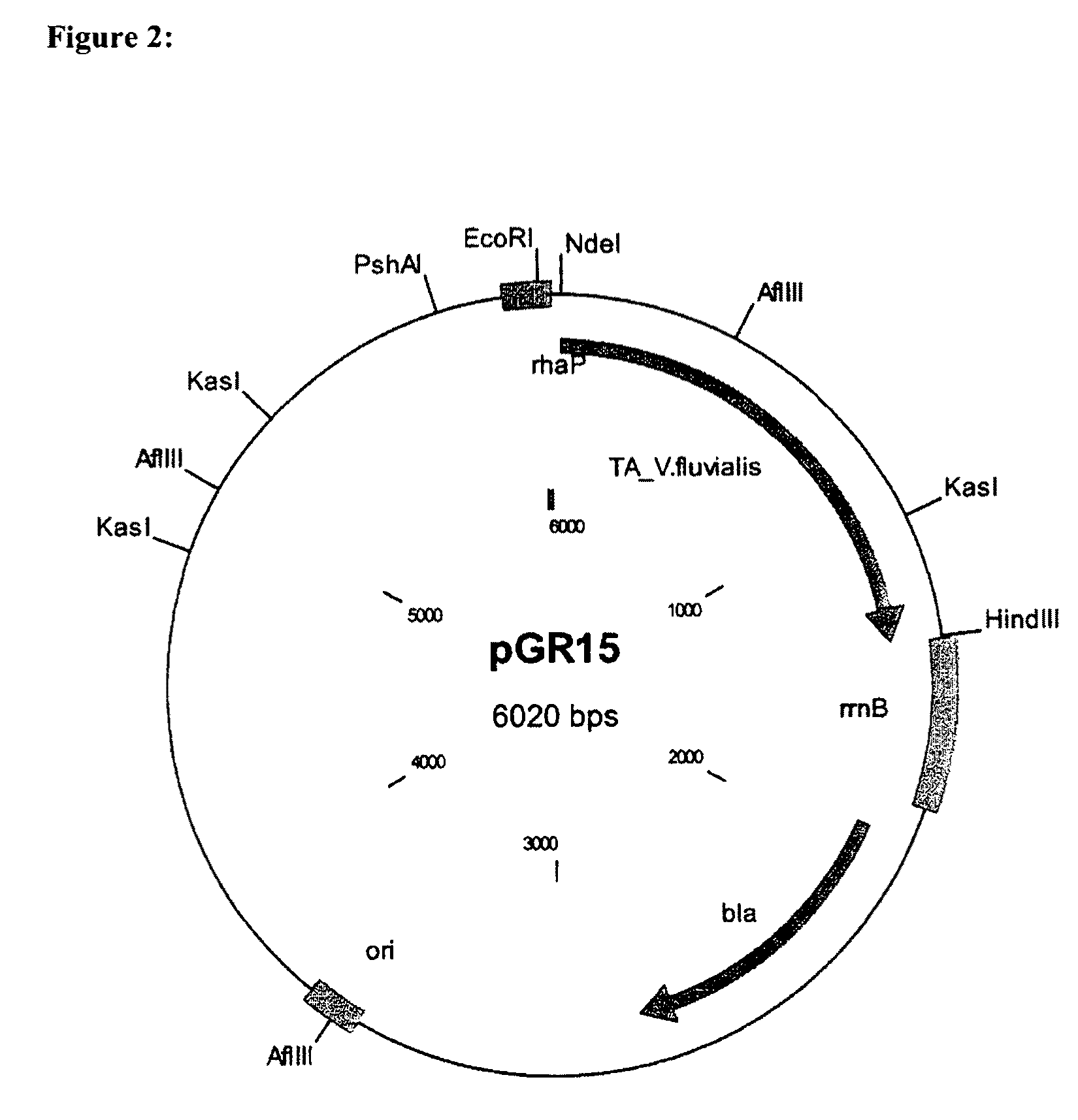Process for preparing enantiomerically enriched amines
a technology of enantiomer and amine, which is applied in the field of preparing enantiomerically enriched or pure amines, can solve the problems of limiting the theoretical yield to 50%, enantiomer may even give rise to a harmful effect, and considerable inconvenience and cos
- Summary
- Abstract
- Description
- Claims
- Application Information
AI Technical Summary
Benefits of technology
Problems solved by technology
Method used
Image
Examples
example 1
Construction of the Expression Strains
[0064]The plasmids pGR15, an E. coli expression plasmid for expressing the transaminase from Vibrio fluvialis under the rhamnose promoter (SEQ ID NO: 1), and pCR4, an E. coli expression plasmid for expressing alanine dehydrogenase from Bacillus subtilis under the rhamnose promoter (SEQ ID NO: 2) were purchased as synthetic constructs from Geneart (Regensburg, Germany).
[0065]The plasmids were transformed into E. coli by the customary molecular biology methods (e.g. Sambrook, J., E. F. Fritsch and T. Maniatis (1989). Molecular cloning: a laboratory manual. Cold Spring Harbor, N.Y., Cold Spring Harbor Laboratory), and cultivated on LB agar plates with 100 μg / ml of ampicillin for selection.
example 2
Recombinant Expression of the Transaminase from Vibrio fluvialis in E. coli DSM14459
[0066]To express the transaminase from Vibrio fluvialis, E. coli DSM14459 (pGR15) was cultivated in 50 ml of LB medium containing 100 μg / ml of ampicillin for plasmid selection. The expression was initiated immediately by adding 2 g / l of L-rhamnose. After incubating at 37° C. while shaking for 24 h, the cells were centrifuged off, resuspended in 10 ml of sodium phosphate buffer (50 mM, pH 7.5) and digested by ultrasound. After centrifuging off the cell fragments, the supernatant was used for further experiments (raw cell extract). The protein content was determined according to Bradford, and the enzyme activity was determined by the transaminase activity test.
example 3
Recombinant Expression of the Alanine Dehydrogenase from Bacillus subtilis in E. coli DSM14459
[0067]To express the alanine dehydrogenase from Bacillus subtilis, E. coli DSM14459 (pCR4) was cultivated in 50 ml of LB medium containing 100 μg / ml of ampicillin for plasmid selection. The expression was initiated immediately by adding 2 g / l of L-rhamnose. After incubating at 30° C. while shaking for 24 h, the cells were centrifuged off, resuspended in 10 ml of sodium phosphate buffer (50 mM, pH 7.5) and digested by ultrasound. After centrifuging off the cell fragments, the supernatant was used for further experiments (raw cell extract). The protein content was determined according to Bradford and the enzyme activity was determined by the amino acid dehydrogenase activity test.
PUM
| Property | Measurement | Unit |
|---|---|---|
| mol % | aaaaa | aaaaa |
| mol % | aaaaa | aaaaa |
| mol % | aaaaa | aaaaa |
Abstract
Description
Claims
Application Information
 Login to View More
Login to View More - R&D
- Intellectual Property
- Life Sciences
- Materials
- Tech Scout
- Unparalleled Data Quality
- Higher Quality Content
- 60% Fewer Hallucinations
Browse by: Latest US Patents, China's latest patents, Technical Efficacy Thesaurus, Application Domain, Technology Topic, Popular Technical Reports.
© 2025 PatSnap. All rights reserved.Legal|Privacy policy|Modern Slavery Act Transparency Statement|Sitemap|About US| Contact US: help@patsnap.com



